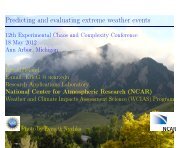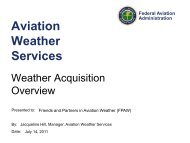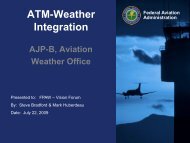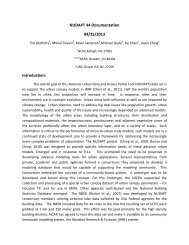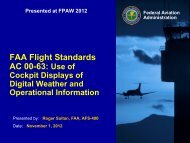Downslope Windstorms - RAL - UCAR
Downslope Windstorms - RAL - UCAR
Downslope Windstorms - RAL - UCAR
Create successful ePaper yourself
Turn your PDF publications into a flip-book with our unique Google optimized e-Paper software.
A few notes on the Chinook<br />
A few notes on the Chinook<br />
Why are Chinooks warm?<br />
The descending air can be warmer for one or more<br />
reasons:<br />
• Compressional heating as air descends the lee side of<br />
the mountain (air warms according to the dry adiabatic<br />
lapse rate: 9.8 °C per km of descent)<br />
• Latent heat of condensation (Hahn effect): air ascends<br />
moist adiabatically (cooling ~5°C per km) on windward<br />
side of mountain while precipitation is produced, then<br />
descends dry adiabatically on the leeward side<br />
• Blocking on the windward side of the mountain can cause<br />
air to descend from a higher level (higher θ)<br />
• Displacement of cold air by warmer air<br />
• Nighttime mixing<br />
Other peculiarities can occur if a cold pool is present<br />
– Waves can propagate on the inversion surface (see<br />
Black Hills paper)<br />
– Mirages can make the mountains look higher<br />
Figures from Whiteman (2000)



